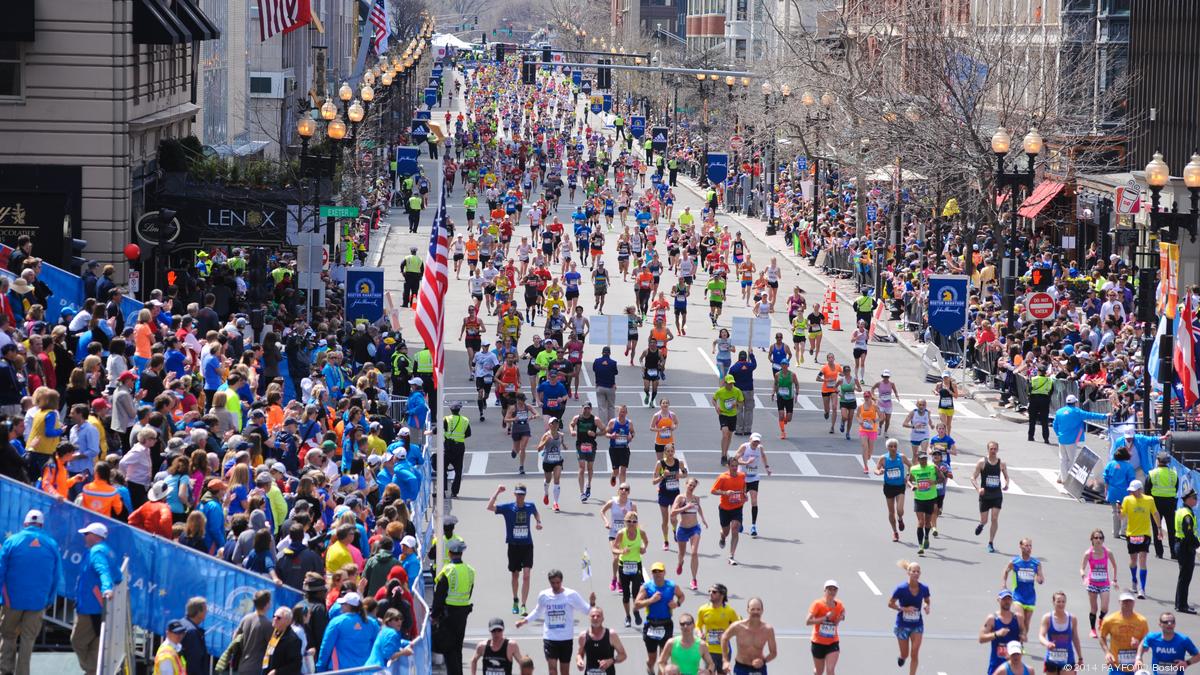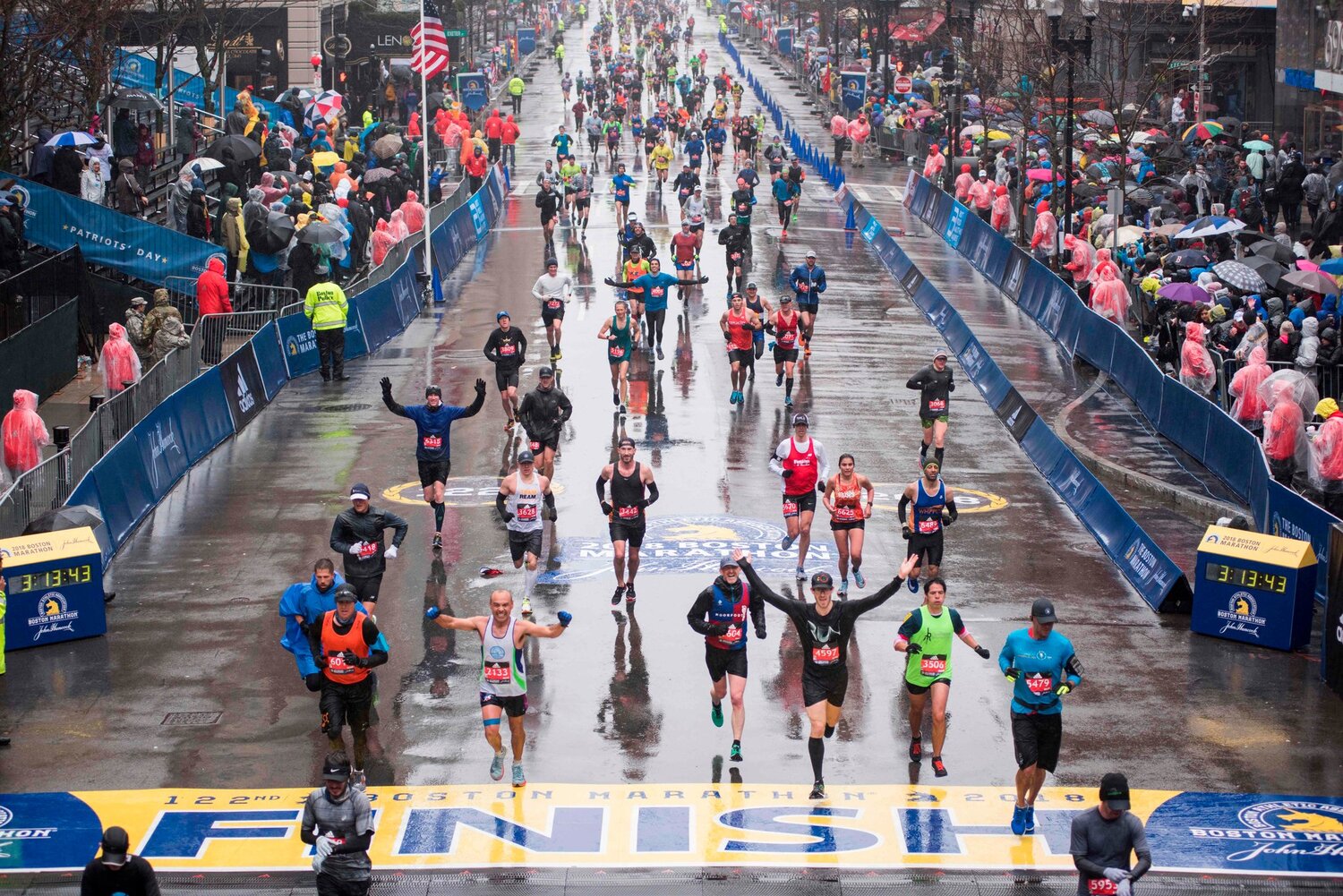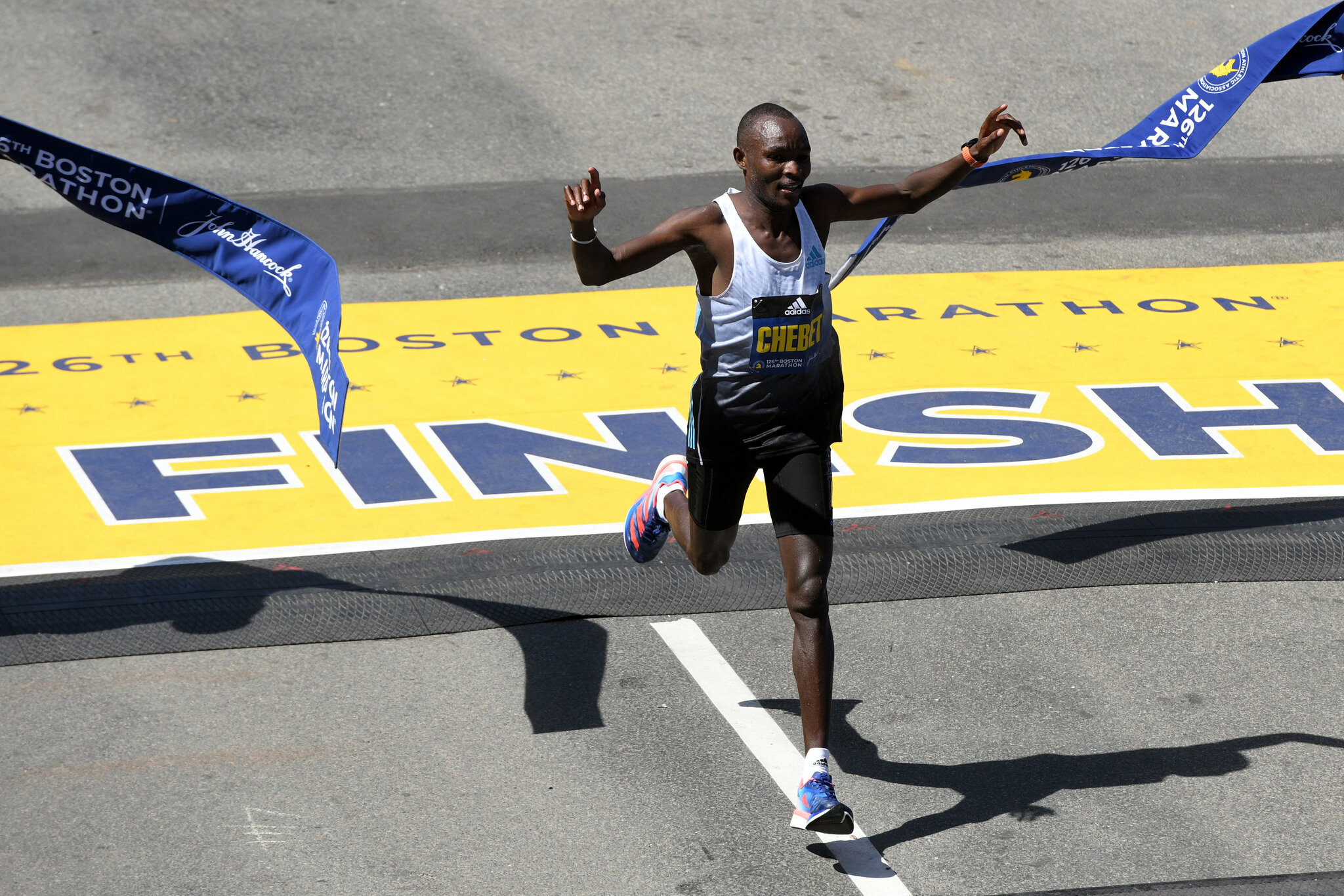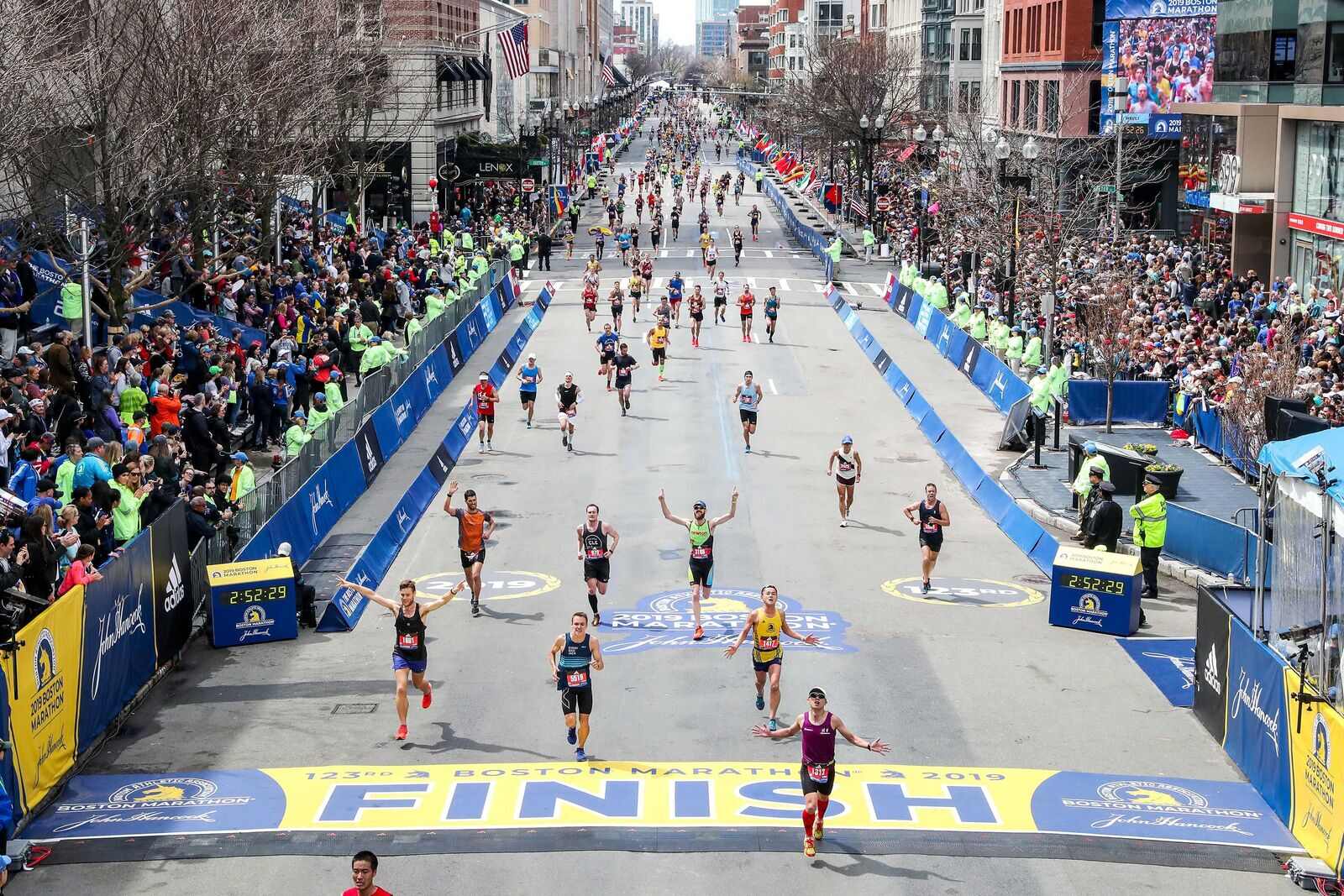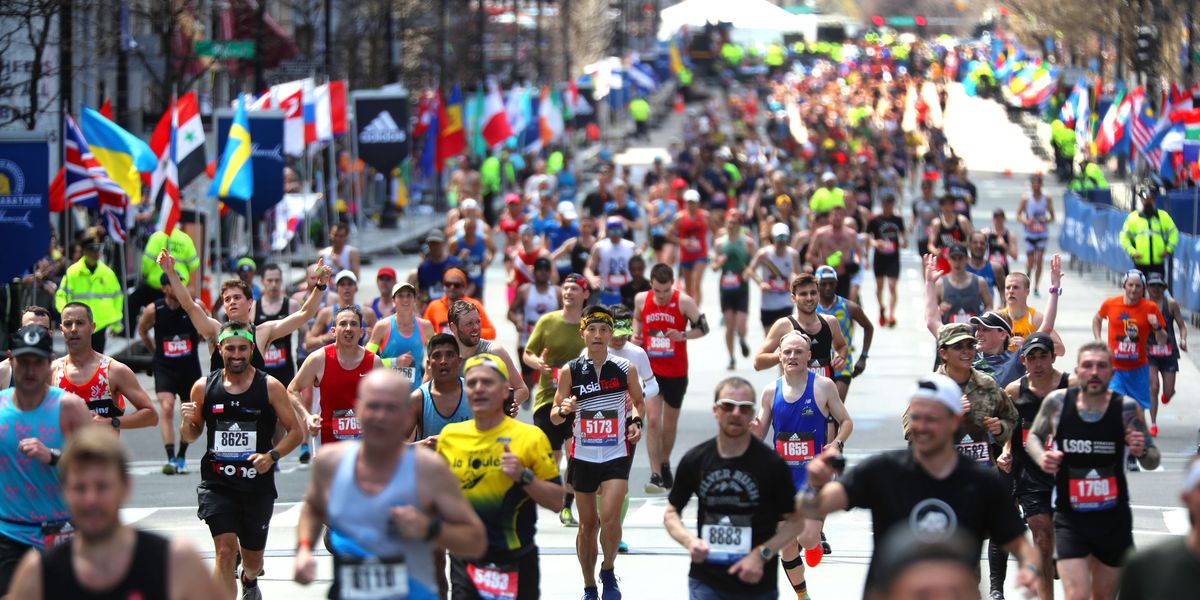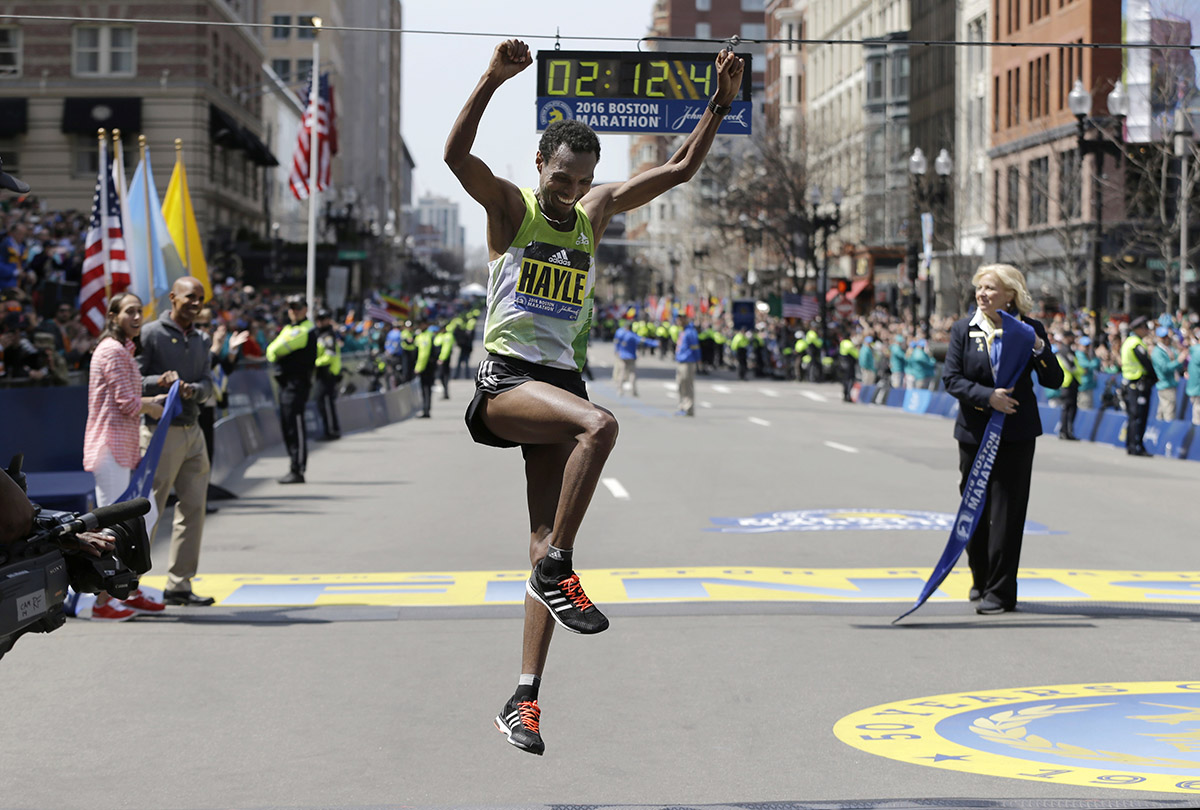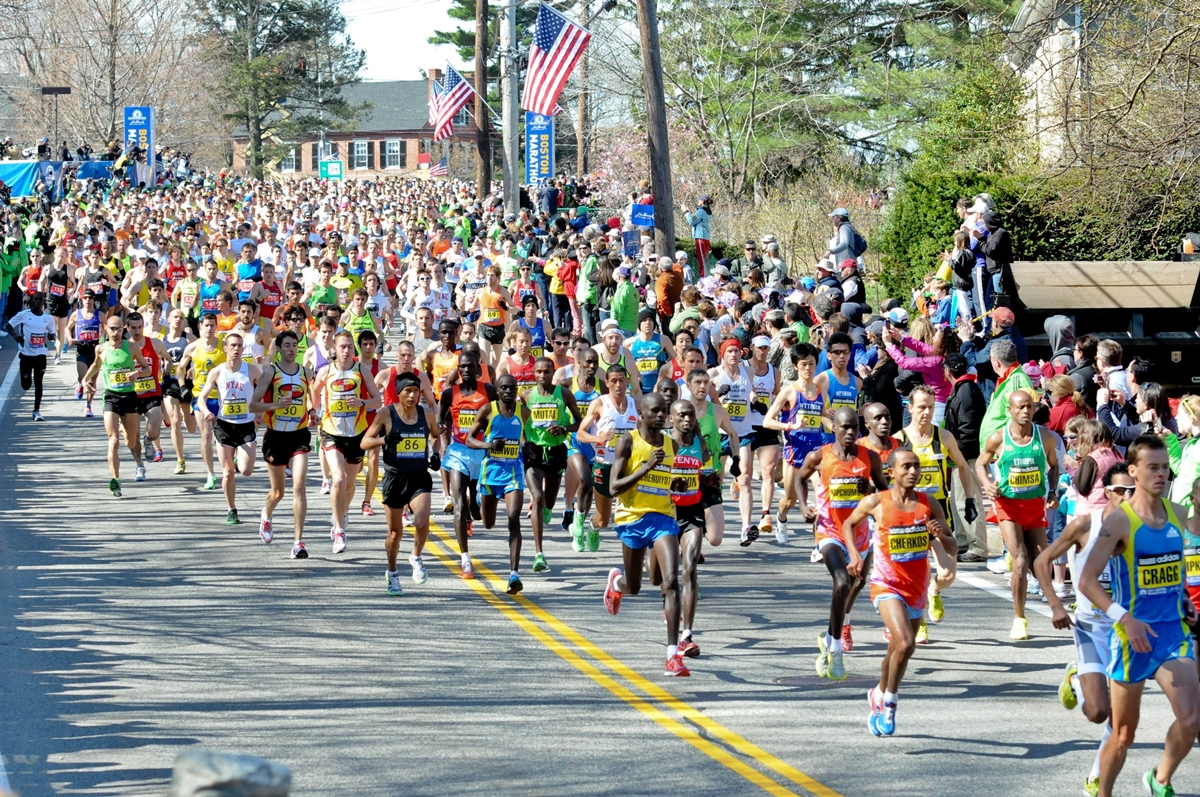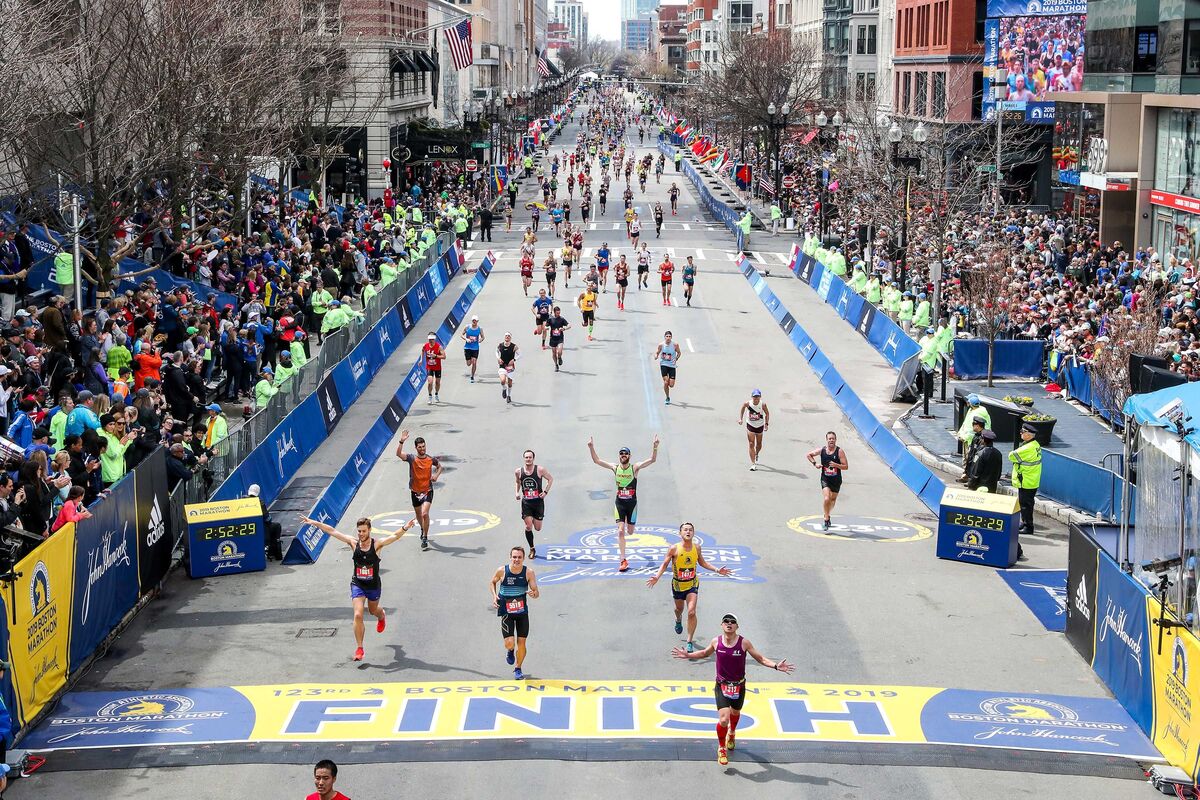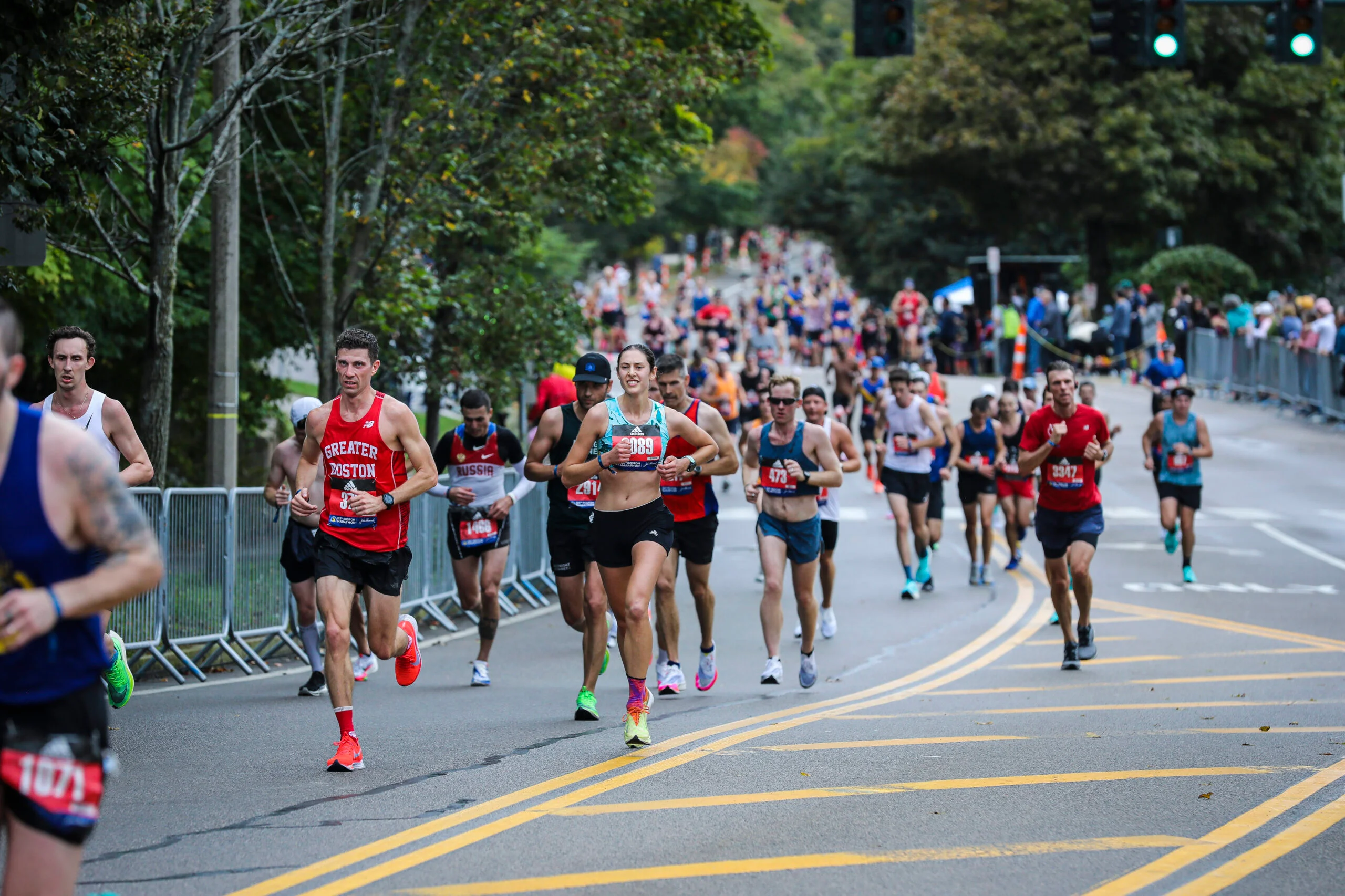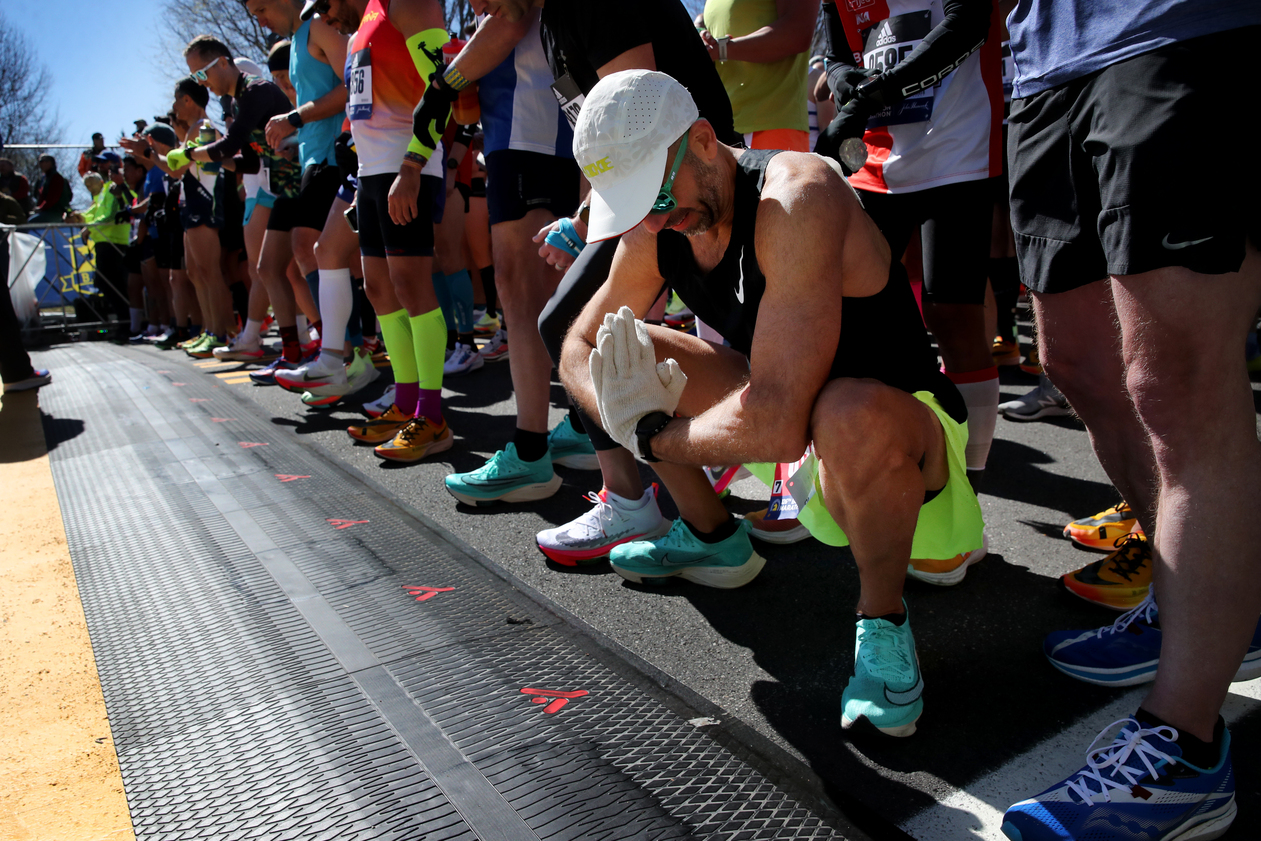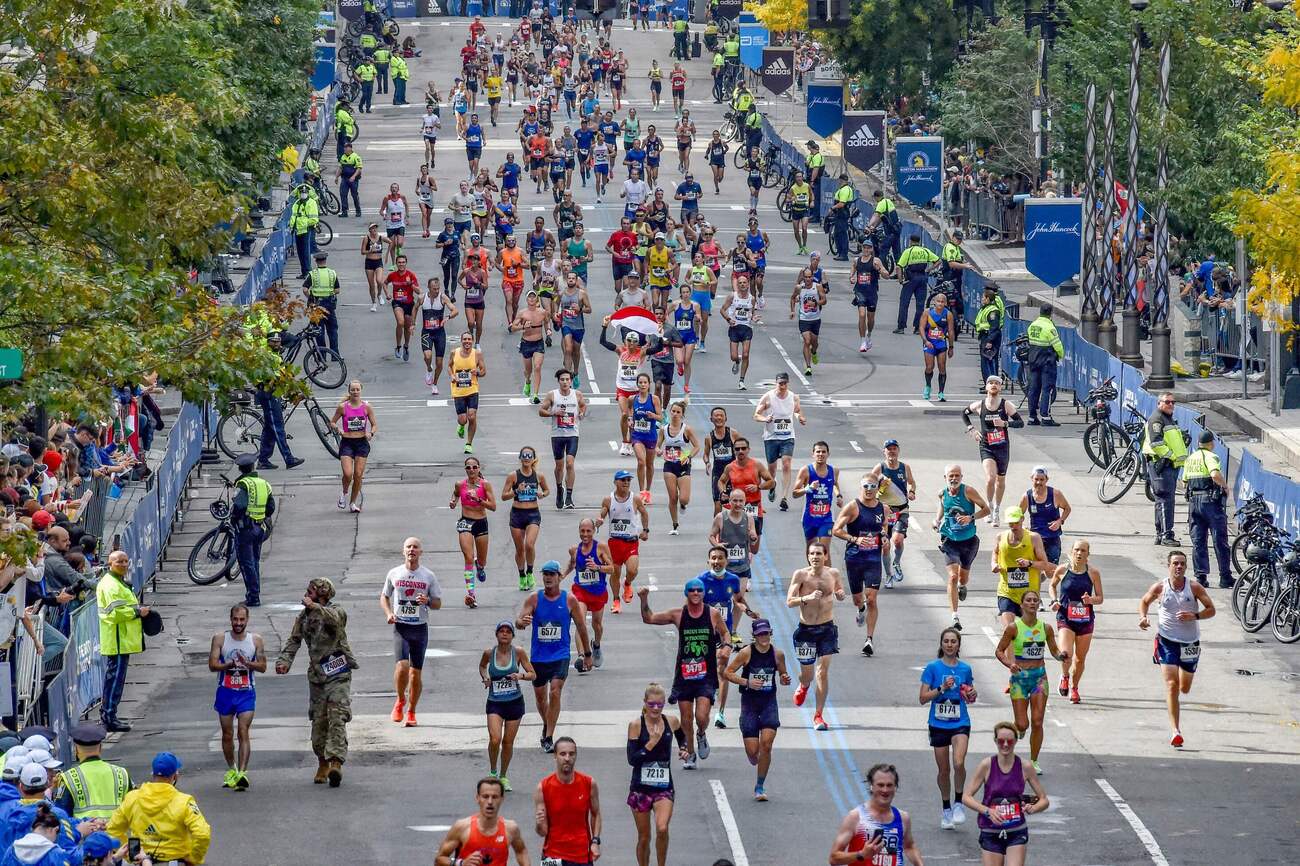

Featured
When Is The Boston Marathon?
Modified: January 22, 2024
"Featured: Find out when the Boston Marathon takes place and mark your calendar for this iconic event in the running world."
Introduction
Welcome to the fascinating world of the Boston Marathon! As one of the most prestigious and iconic marathons in the world, the Boston Marathon has captured the hearts and imagination of runners and spectators alike for over a century.
Every year, thousands of runners from around the globe gather in Boston, Massachusetts to test their physical and mental endurance, pushing themselves to the limit on a course that is steeped in history and tradition. Whether you are a seasoned marathon runner, a passionate spectator, or someone curious about the event, this article will provide you with a comprehensive guide to the Boston Marathon.
From its humble beginnings in 1897 to becoming one of the World Marathon Majors, the Boston Marathon has evolved into a celebrated event that embodies the spirit of perseverance and accomplishment. Known for its challenging course and unpredictable New England weather, the marathon has become a true test of endurance and determination.
Qualifying for the marathon is a significant achievement in itself, as it requires runners to meet specific time standards in previous races. The rigorous qualifying process ensures that only the most dedicated and experienced runners are able to participate in this prestigious event.
Once qualified, runners eagerly anticipate the starting line on Patriots’ Day, the third Monday in April. Thousands of spectators line the 26.2-mile route, cheering on the participants and creating an electrifying atmosphere that fuels the runners’ determination to reach the finish line.
But the Boston Marathon is not just about the runners; it is also an event that brings together the community and showcases the rich history of Boston. From the iconic “Heartbreak Hill” to the finish line on Boylston Street, the course takes runners through some of the city’s most historic and picturesque landmarks.
Throughout the years, the Boston Marathon has seen countless remarkable performances and shattered records, leaving a lasting legacy in the annals of marathon history. Alongside the competition, the marathon also provides an opportunity for participants to raise funds for charitable causes, making a positive impact on the community.
Whether you are planning to run, cheer on the sidelines, or simply want to learn more about this historic event, this article will guide you through the captivating world of the Boston Marathon. Get ready to be inspired and immerse yourself in the excitement, tradition, and triumphs of this legendary race!
History of the Boston Marathon
The Boston Marathon, first held in 1897, is the oldest annual marathon in the world and has a storied history that has shaped the sport of long-distance running. The race was inspired by the success of the marathon event in the first modern Olympic Games in 1896, and it aimed to bring the excitement and spirit of the Olympic Games to the United States.
The inaugural Boston Marathon took place on April 19, 1897, with a field of 15 participants. Starting in Ashland, Massachusetts, the race followed a course that led the runners into the heart of Boston, finishing in front of the Irvington Street Oval. John J. McDermott, a 25-year-old American, emerged as the first champion, completing the distance in a time of 2 hours, 55 minutes, and 10 seconds.
Over the years, the Boston Marathon evolved and grew in popularity, attracting both amateur and professional runners from around the world. In 1966, Roberta “Bobbi” Gibb became the first woman to complete the marathon, even though she had to run unofficially as women were not officially allowed to participate until 1972.
The Boston Marathon became the first major marathon to include a wheelchair racing division in 1975, thanks to the efforts of wheelchair athlete Bob Hall. This division has continued to grow and has become an integral part of the event, showcasing the incredible athleticism and determination of wheelchair athletes.
Throughout its history, the Boston Marathon has witnessed several unforgettable moments and triumphs. One of the most iconic moments came in 2013 when tragedy struck. Two bombs exploded near the finish line, resulting in the loss of three lives and injuring hundreds of spectators and runners. The resilience and unity displayed by the Boston community and the running community worldwide were inspiring, and the following year’s marathon became a symbol of strength and determination.
In recent years, the Boston Marathon has gained international recognition as one of the World Marathon Majors, a series of six of the world’s most prestigious marathons. This status further solidified the race’s reputation as a must-run event for elite athletes and recreational runners alike.
Each year, the Boston Marathon attracts a diverse field of participants, ranging from elite runners to everyday individuals who have trained for months to qualify for the race. The event continues to captivate audiences worldwide, with millions of spectators lining the course to cheer on the runners and be a part of the remarkable atmosphere.
The history of the Boston Marathon is a testament to the enduring spirit of human endeavor, bringing together individuals from all walks of life in pursuit of a common goal – crossing the finish line of one of the most prestigious marathons in the world.
Qualifying for the Boston Marathon
Qualifying for the Boston Marathon is a significant achievement and a dream for many aspiring runners. Unlike other marathons where anyone can register to participate, the Boston Marathon has stringent qualifying standards that ensure only the most dedicated runners earn a spot on the prestigious starting line.
The qualifying standards are based on age and gender, allowing for fair competition across different age groups. To qualify, runners must complete a certified marathon within a specific qualifying time designated by the Boston Athletic Association (BAA). The qualifying window typically opens approximately 18 months before the Boston Marathon and remains open until registration reaches capacity.
The qualifying times vary depending on age and gender, with the fastest times required for the younger age groups. For example, the current qualifying time for the men’s 18-34 age group is sub 3 hours, while the women’s qualifying time is sub 3 hours and 30 minutes. The qualifying times become more lenient as age increases, taking into account the natural decline in performance as runners age.
It is important to note that simply meeting the qualifying time does not guarantee entry into the Boston Marathon. Due to the popularity of the event, there is often more demand than available spots. Therefore, runners must meet the qualifying standard and then wait for confirmation from the BAA based on the number of available entries.
Qualifying for Boston is a goal that requires careful planning and commitment. Many runners spend years training and gradually improving their times in order to achieve the elusive Boston qualifying standard. It takes dedication, discipline, and a structured training program to meet and exceed the required pace.
There are various strategies that runners use to increase their chances of qualifying for Boston. Some choose flat and fast courses that are known for producing fast times, while others specifically target races with favorable weather conditions. Additionally, working with a coach or following a personalized training plan can help runners optimize their performance and make steady progress towards their goal.
Qualifying for the Boston Marathon is a celebration of hard work, perseverance, and the pursuit of excellence in running. It represents the culmination of countless hours of training, the overcoming of physical and mental obstacles, and the reward of achieving a long-held dream.
The Boston Marathon is not only a race, but a testament to the dedication and passion of the running community. It brings together runners from all over the world who share a common goal – to qualify for and participate in one of the most prestigious marathons on the planet.
Route and Course Information
The route and course of the Boston Marathon are steeped in history and showcase the scenic beauty and landmarks of the city of Boston. Spanning 26.2 miles, the course takes runners through diverse neighborhoods, challenging terrain, and iconic landmarks, making it a memorable and exciting race for participants and spectators alike.
The race starts in the rural town of Hopkinton and follows a point-to-point course, ending on Boylston Street in downtown Boston. The first few miles of the course feature a gradual downhill, providing a fast start for runners. However, this is followed by several rolling hills, including the infamous “Heartbreak Hill” which appears around mile 20, testing the runners’ endurance and mental strength.
The Boston Marathon course is known for its demanding nature, requiring runners to train specifically for the undulating terrain. It is advisable for participants to incorporate hill training into their preparation to ensure they are adequately prepared.
Along the course, runners pass through several distinctive sections and landmarks. The Wellesley College “Scream Tunnel” is a notable highlight around mile 13, where enthusiastic college students line the route, offering encouragement and creating an incredible atmosphere.
As the course winds its way through the picturesque suburbs of Boston, spectators line the streets, cheering on the runners and providing much-needed support. The atmosphere is electric, with music, signs, and the cheering crowds motivating runners to keep pushing forward.
The final stretch of the course is one of the most iconic in marathon racing. As runners approach Boylston Street, they can see the finish line in the distance, symbolizing the culmination of months of hard work and dedication. The energy of the crowd intensifies as the runners turn onto Boylston Street and make the final sprint towards the finish line, often accompanied by the cheers of both seasoned spectators and new fans alike.
The Boston Marathon course holds a special place in the hearts of runners and spectators alike, with its challenging hills, passionate crowds, and iconic landmarks. It encapsulates the history and spirit of the event, providing a unique and unforgettable experience for all involved.
Whether competing in the race or cheering from the sidelines, the Boston Marathon route offers a rich and vibrant experience that showcases the city’s history, beauty, and the incredible camaraderie of the running community.
Spectator Information
The Boston Marathon is not only an incredible race for runners but also a thrilling event for spectators. Each year, millions of people line the course, cheering on the participants and creating an electric atmosphere that adds to the excitement and energy of the race.
If you’re planning to be a spectator at the Boston Marathon, here’s some essential information to help you make the most of your experience:
Choosing a Spectator Spot: The course offers multiple prime locations to catch the action. Consider spots like the start line in Hopkinton, the historic Wellesley College area, “Heartbreak Hill” in Newton, or the finishing stretch on Boylston Street. These areas offer great views, energy, and a chance to witness the runners’ determination up close.
Getting to Your Spot: Boston Marathon day brings significant road closures and heavy crowds. Plan your route in advance, considering public transportation options like the subway (known as the “T”) or commuter rail. If driving, be aware that parking may be limited, and road closures may make it challenging to access certain areas.
What to Bring: As a spectator, it’s essential to come well-prepared. Wear comfortable shoes and clothing suitable for the weather conditions. Pack sunscreen, a hat, and sunglasses to protect yourself from the sun. Bring water, snacks, and any other items you may need to stay comfortable throughout the day.
Joining the Excitement: Spectating at the Boston Marathon is an experience like no other. Embrace the energy of the event by bringing signs, balloons, and noise-makers to cheer on the participants. Don’t be afraid to get loud and show your support – the runners appreciate every bit of encouragement.
Enjoying the Atmosphere: The Boston Marathon is more than just a race; it’s also a celebration of the community. Take advantage of the various entertainment and food options along the course. Enjoy live music performances, local vendors, and food trucks that contribute to the festive atmosphere.
Tracking Runners: If you have friends or family participating in the race, take advantage of the official Boston Marathon website, which provides a tracking feature to monitor their progress. This way, you can plan to be in your designated spot to cheer them on as they pass by.
Be Respectful and Mindful: While spectating, it’s important to be respectful of the runners, other spectators, and the course. Stay behind any designated barriers and avoid interfering with the race. Show support and encouragement without obstructing the runners or compromising their safety.
Spectating at the Boston Marathon is an opportunity to witness remarkable human achievements and be part of an incredible community event. It’s a chance to show support, cheer on friends and family, and be inspired by the determination, endurance, and spirit of the runners.
So grab your enthusiasm, find a prime viewing spot, and prepare to be part of the electric buzz of the Boston Marathon!
Safety Measures and Regulations
The Boston Marathon takes the safety of its participants, spectators, and staff as a top priority. With such a large-scale event, numerous safety measures and regulations are in place to ensure a smooth and secure experience for everyone involved.
Security Screening: To maintain a safe environment, all participants and spectators must pass through designated security checkpoints at various points along the marathon route and at the finish line area. Bag checks and metal detectors are commonly used to screen for prohibited items.
Prohibited Items: Certain items are not allowed at the Boston Marathon to maintain safety and minimize potential hazards. Examples of prohibited items include weapons, explosives, glass containers, drones, and large backpacks. It’s essential to familiarize yourself with the official list of prohibited items before attending the event.
Emergency Medical Services: A comprehensive medical plan is in place to respond to any medical emergencies during the Boston Marathon. Trained medical professionals and volunteers are stationed at various points along the course to provide immediate assistance to participants in need. Spectators can also access medical assistance by alerting nearby volunteers or staff members.
Emergency Evacuation Plans: In the event of severe weather, natural disasters, or other emergencies, the marathon organizers have established detailed evacuation plans to ensure the safety of all participants and spectators. It’s important to follow the instructions of event staff or local authorities if an evacuation is necessary.
Weather Preparedness: The Boston Marathon takes place in April, and the New England weather can be unpredictable. The organizers closely monitor weather conditions and provide information and guidance to participants and spectators. It is recommended to dress appropriately for the weather and check for updates before attending the event.
Hydration and Aid Stations: Given the physical demands of a marathon, hydration and aid stations are strategically placed along the course to provide water, sports drinks, and medical assistance if needed. Participants are advised to take advantage of these stations to stay hydrated and replenish their energy levels.
Respecting Course Boundaries: Spectators are requested to respect course boundaries and not interfere with the progress of the runners. Crossing the course or obstructing the runners’ path can jeopardize their safety and disrupt the flow of the race. It’s important to follow the instructions of event staff and stay behind designated barriers.
Security Personnel and Law Enforcement: The Boston Marathon works closely with local law enforcement agencies to ensure a safe and secure environment. Police officers, security personnel, and volunteers are present throughout the event to monitor and respond to any security concerns.
The safety measures and regulations implemented at the Boston Marathon aim to create an environment where participants can run to their full potential and spectators can enjoy the race in a secure setting. By following the rules and cooperating with event staff and law enforcement, we can all contribute to the overall safety and success of this iconic event.
Past Winners and Records
The Boston Marathon has a rich history of incredible performances and legendary runners who have left their mark on the race. Each year, the event brings together some of the world’s top athletes, whose names become etched in marathon history as they achieve remarkable feats of endurance and speed.
Over the years, the men’s division has seen outstanding performances, with several runners setting records that have stood the test of time. One of the most notable record-setters is Geoffrey Mutai, who shattered the course record in 2011 with a blistering time of 2 hours, 3 minutes, and 2 seconds. This incredible performance remains the fastest marathon ever run, despite not being a recognized world record due to the point-to-point nature of the Boston Marathon course.
In the women’s division, notable winners include Joan Benoit Samuelson, who claimed victory in the inaugural women’s Olympic marathon at the 1984 Los Angeles Games, and Katherine Switzer, who made history as the first woman to officially enter and complete the Boston Marathon in 1967. Several women have also left their mark by breaking course records, such as Margaret Okayo of Kenya, who set the women’s record in 2002 with a time of 2 hours, 20 minutes, and 43 seconds.
One of the most memorable moments in Boston Marathon history came in 2018 when Japan’s Yuki Kawauchi shocked the running world by winning the men’s race in challenging weather conditions. Kawauchi’s victory made him the first Japanese man to win the Boston Marathon in over 30 years.
In addition to individual achievements, the Boston Marathon has also witnessed dominance from certain countries. Kenya and Ethiopia, in particular, have consistently produced top-performing athletes, whose remarkable speeds and endurance have secured numerous victories in both the men’s and women’s divisions.
As the Boston Marathon continues to grow in popularity and global status, it remains a highly coveted race among elite runners worldwide. The legacy of past winners and their record-breaking performances continues to inspire current and future participants to push their limits and reach for greatness.
Each year, the Boston Marathon provides a platform for athletes to challenge themselves, break records, and become part of the rich tapestry of marathon history. The race serves as a reminder of the human capacity for endurance, determination, and the pursuit of excellence.
Whether it’s breaking records, achieving personal bests, or simply crossing the finish line, the Boston Marathon has become a symbol of inspiration and accomplishment for runners of all levels, leaving an indelible mark on the world of marathon racing.
Charity and Fundraising Opportunities
The Boston Marathon is not only about the elite runners and their pursuit of victory. It is also an event that embraces the spirit of giving and provides opportunities for participants to make a positive impact in their communities through charity and fundraising efforts.
As one of the world’s most prestigious marathons, the Boston Marathon offers numerous charity programs that allow runners to raise funds for a variety of causes. Many participants choose to dedicate their race to a charity close to their hearts, using their miles as a platform to raise awareness and generate support.
Charity and fundraising opportunities associated with the Boston Marathon are diverse and inclusive. Participants can choose to partner with an official Boston Marathon Charity Program, which have established partnerships with various organizations. These programs often provide runners with training support, fundraising tools, and a guaranteed entry into the race.
Runners can also choose to raise funds independently, partnering with a charity of their choice that may not be officially affiliated with the Boston Marathon. This gives participants the flexibility to support causes that are deeply personal and meaningful to them, amplifying the impact of their efforts.
The fundraising efforts associated with the Boston Marathon make a significant difference in communities around the world. The funds raised by participants go towards a wide range of causes, including medical research, education programs, disaster relief, support for marginalized populations, environmental initiatives, and many more.
Beyond the personal satisfaction of making a positive impact, there are additional benefits to running for charity. Many charity programs offer perks such as race-day hospitality, specialized training programs, team camaraderie, and post-race celebrations. These incentives enhance the overall experience and further motivate participants to reach their fundraising goals.
Participating in the Boston Marathon as a charity runner is a rewarding experience that goes beyond the physical challenge of completing the race. It allows individuals to connect with a cause they are passionate about, rally support from their communities, and contribute to the greater good while fulfilling their own athletic goals.
For those considering running for charity, it’s important to research and identify organizations that align with their values and mission. Taking the time to understand the charity’s goals, impact, and fundraising requirements helps ensure a meaningful partnership that maximizes the potential for positive change.
The Boston Marathon provides an incredible platform for individuals to use their passion for running to make a difference. By combining athletic achievement with philanthropy, participants can leave a lasting impact and support causes that inspire them, creating a ripple effect of change that extends far beyond the finish line.
Conclusion
The Boston Marathon is a race unlike any other, steeped in history, tradition, and the indomitable spirit of the running community. From its humble beginnings in 1897 to becoming one of the world’s most prestigious marathons, it has evolved into an iconic event that captures the imagination and inspires countless individuals to push their limits.
Participants who qualify for the Boston Marathon embark on a journey that requires unwavering dedication, discipline, and determination. The race serves as a culmination of months, if not years, of preparation and training, a test of physical and mental endurance, and a celebration of personal achievement.
For spectators, the Boston Marathon is an opportunity to be part of an electrifying atmosphere brimming with excitement, support, and camaraderie. From cheering on the sidelines to witnessing extraordinary performances, spectators play a crucial role in creating an unforgettable experience for the runners.
The race route itself, with its challenging hills and iconic landmarks, showcases the beauty and history of Boston. From the start in Hopkinton to the finish on Boylston Street, runners encounter diverse neighborhoods, enthusiastic crowds, and a course that demands resilience and perseverance.
Charity and fundraising opportunities associated with the Boston Marathon provide participants with a chance to make a positive impact in their communities and beyond. By harnessing the power of running and combining it with their passion for a cause, runners amplify their efforts and contribute to meaningful change.
Throughout the years, the Boston Marathon has witnessed world records, historic victories, and inspirational moments that have left a lasting imprint on the sport of marathon running. The names of past winners and their incredible performances serve as a testament to the human spirit and the pursuit of excellence.
As we reflect on the Boston Marathon, it is clear that the event represents more than just a race. It embodies resilience, determination, and the power of the human spirit. It brings together people from all walks of life, uniting them in the pursuit of personal achievement and the common goal of crossing the finish line.
Whether you are a runner hoping to qualify, a spectator eager to witness the excitement, or a philanthropist wanting to make a difference, the Boston Marathon offers a unique experience that leaves an indelible mark on all who participate. It is a celebration of human potential, community, and the unwavering desire to push beyond perceived limits.
So, lace up your shoes, prepare to be inspired, and immerse yourself in the captivating world of the Boston Marathon – a race that embodies the spirit of endurance, perseverance, and the triumph of the human spirit.
